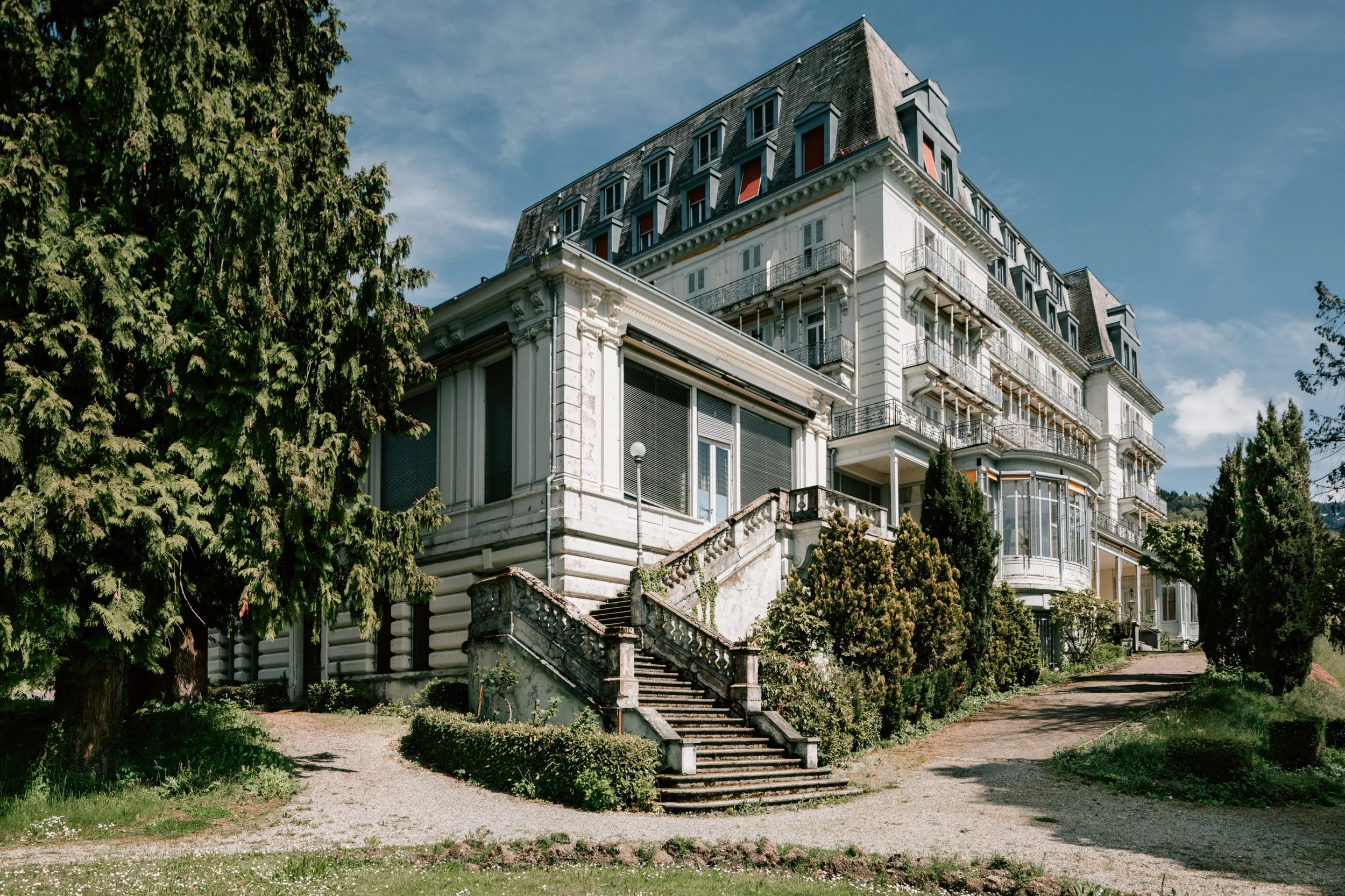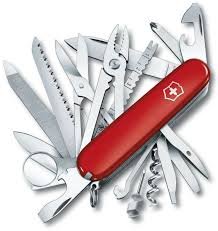Kein EU-Unterwerfungsvertrag
Dieses Video soll unsere Politiker darauf hinweisen wo die Schweiz 🇨🇭hingehört, aber allen voran wohin NICHT!
Brienz BE - Murgang 2024
Als am 12. August 2024 das Wasser kam, verwüstete ein gigantischer Murgang grosse Teile von Brienz BE im Berner Oberland. So sieht es in Brienz heute aus, 50 Tage danach. Die Zentralbahn plant ab Ende November ihren Verkehr wieder aufzunehmen.
Old Mountain Station
The Wetterhorn Elevator was an aerial tramway in the valley of Grindelwald. It connected the base of the Upper Grindelwald Glacier to a higher location in the Wetterhorn massif. The tramway was inaugurated in 1908, making it the first of its kind in Switzerland. It closed only a few years later in 1915. The facility was referred to as an elevator because of the 116% average gradient of the suspension cables. The height difference was 420 metres. At the time of the opening, the Wetterhorn Elevator has been described as the world's first modern aerial cableway system. Since there were no concessions yet for such type of transport, an automobile concession form had to be used instead.
Der Wetterhorn-Aufzug in der Schweiz war die erste öffentliche Luftseibahn für den Personenverkehr der Schweiz.1908 wurde das erste Teilstück vom Hotel Wetterhorn östlich von Grindelwald bis zur auf 1677 m gelegenen Bergstation Enge in Betrieb genommen. Die Strecke verlief über die (mittlerweile abgeschmolzene) Zunge des Oberen Grindelwaldgletschers hinweg auf die Wiesen am oberen Ende des «Ischpfads», wo noch heute unterhalb des Pfades zur Glecksteinhütte die Ruine der Bergstation steht. Wie ein Adlerhorst ist die Bergstation Enge in der Felswand über dem oberen Grindelwaldgletscher am Fuss des Wetterhorns eingebettet. Die bei den Touristen sehr beliebte Bahn konnte pro Stunde und Richtung 110 Personen befördern. Anfänglich hatte diese Bahn einen grossen Erfolg. Obwohl er seiner Zeit weit voraus war, stellte der Wetterhorn-Aufzug 1915 seinen Betrieb infolge des Ausbleibens von Touristen nach Ausbruch des Ersten Weltkrieges wieder ein. Er wurde aus verschiedenen Gründen nicht wieder aufgenommen. Heute sind von der Anlage nur noch die Ruine der Bergstation Enge und das Fundament der Talstation vorhanden. (Wikipedia)
Hotel Righi Vaudois
The Hotel Righi-Vaudois has been a Grand Hotel in times of the Belle Epoque. The hotel is located in Glion,a village in the municipality of Montreux, that was the equivalent of the health resort Rigi-Scheidegg in the canton of Schwyz.
It started as a little chalet in 1854 built by Jacques Mirabaud ( a Genevan financier and co-founder of the Swiss private Bank Mirabaud). Ten years after the opening a second larger building was built in addition to the chalet.It became the first hotel located in the high altitudes above the Lake Geneva.
The hotel facility included a bathhouse, several gardens, lounges, as well as a private telegraph line.
The view onto the Lake Geneva is absolutely stunning.
The Righi-Vaudois closed almost 20 years ago, and has been taken over in 2020 by the Saudi Arabian Investment Group Saba & partners.
MUDAC Photo Elysee in Lausanne
On the Platform 10 in Lausanne City, Photo Elysée and the mudac join the Musée cantonal des Beaux-Arts (MCBA).It is a government-supported institution founded in 1985 by Charles-Henri Favrod.The Elysee Photo is one of the most important museums dedicated to photography. ( Closed on Tuesday) Opening hours: Thursday from 10am - 8pm, all other days from 10am-6pm)
The Foundation Jan Michalski for writing and literature!
The Foundation, created in 2004, is located in a quiet isolated area in Montricher, the foot of the Jura Mountains, with a gorgeous view onto the Lake Léman/Lake Geneva!
Since 2017 the Foundation welcomes writers in residence.
Château de Vullierens, Canton Canton de Vaud 🇨🇭
The Château de Vullierens is a unique family heritage in Switzerland, and has belonged to the same family for more than 700 years.
The Château is located in Vullierens,a municipality in the Swiss canton of Vaud, located in the district of Morges.
Vullierens is known for the castle with its iris gardens and banqueting center "Portes des Iris”!
Gain an insight into some of the marvelous gardens, the IRIS plantations as well as the “Les Artistes Archive”.
Le Sentier des Toblerones
The ten-kilometer trail between the Jura and Lake Geneva follows a line of concrete anti-tank fortifications built to protect Switzerland during the Second World War, between 1939-1945.
“Toblerone” is the name given to the anti-tank emplacements reminiscent of this specific Swiss chocolate bar, invented by Emil Baumann and Theodor Tobler in Berne, Switzerland, in 1908.
For more information about this famous chocolate, please check https://en.wikipedia.org/wiki/Toblerone
It’s worth trying! 🇨🇭🍫
Produced in Bern, Switzerland, sometimes manufactured elsewhere in the past, and planned to be made in Slovakia from the end of 2023. Toblerone is known for its distinctive shape, a series of joined triangular prisms and lettering engraved in the chocolate. Mondelēz International (U.S.)
ROMAINMÔTIER
Romainmôtier, a former Cluniac priory, crossed by the river Nozon, is a small medieval village located in the district of Jura-Nord Vaudois.
The thousand-year-old abbey church, the oldest Romanesque-style building in Switzerland, sets the pace of life in the village.
It is entered on the Swiss inventory of cultural property of national and regional significance.It all begins with an idea. Maybe you want to launch a business. Maybe you want to turn a hobby into something more.
Discover the beautiful Lötschental!
The Lötschental lies embedded between the Valaisian and Bernese Alps in the canton of Valais in Switzerland.The main villages of the Lötschental are Weiler and Kippel, the whole valley has approximately 1’500 inhabitants.
Lötschental has become a great destination for hiking (200 km of hiking trails) and winter sports. Especially in autumn the whole valley turns into a beautiful colorfulness.
The valley is part of the UNESCO World Heritage Region Swiss Alps Jungfrau-Aletsch.
the hidden Gems of switzerland
“ I haven’t been everywhere, but it’s on my list”! Susan Sontag
This blog invites you to discover the hidden gems of Switzerland, places you have to know, or you don't necessarily find in the official tourist guides. Have fun on our trip through an extraordinary country.
Raclette & Cheese Fondue, the two most typical and best Swiss specialities!
Both dishes are very sociable and have one common thread … namely cheese. On your next trip to Switzerland don’t forget to buy a caquelon and forks for the Fondue, as well as a set for the Raclette. Caquelon is a French word and means pot, a cooking vessel either of ceramic or porcelain. Attached the 2 recipes, just give it a try, have fun and enjoy!!
Raclette: It originates from the canton Wallis in Switzerland and is about 400 years old . The best cheese to buy is the one typically made for Raclette, the Swiss Raclette Cheese ( you can make the Raclette with different cheese) The Raclette grill is placed in the middle of the table with all the ingredients (whatever you like) around. Each person gets a small pan to cover it with a slice of cheese, seasonings and ingredients at personal choice. Once the cheese is melted and bubbling under the grill, it’s ready to eat. For getting the melted cheese onto your plate, we use little wooden or plastic spatulas, which come with the Raclette grill. The top of the grill is used for grilling meat, but this isn’t a must. Ingredients are potatoes, cherry tomatoes, onions, fresh chopped herbs like cilantro, basil, chives… A good bottle of wine at choice accompanies this traditional Swiss dish. Enjoy!
Cheese Fondue: "Fondue comes from the French “fondue” which means “to melt”. Back in the 18th century people, living in the Alps with limited access to fresh food stores during winter time, used the Cheese Fondue as a way to use up old cheese and bread. The ingredients are 1 garlic clove halved or chopped, for 2 people 400g of Fondue cheese at choice ( usually we count 200g pp.) 240ml /1 cup of white wine, some Kirsch/cherry schnapps, 1 teaspoon cornstarch and freshly grounded pepper. Not to forget the bread hand-chopped in bite-sized cubes. Now let’s get started: Rub the inside of the pot with the garlic clove, or just put in the chopped garlic, add the white wine and pepper. Beside take a small recipient and mix the Kirsch with the cornstarch, it has to be fluid. Put the wine to high heat, add the specially chopped cheese portionwise, start stirring ( with a wooden spoon) and turn the heat a little bit down when the cheese starts melting. An insider advice: always stir in the way of an 8!!! When the cheese is melted add the Kirsch and stir well. With all this done move the Fondue pot to the Fondue set burner and start eating. Everytime you lose your bread cube in the fondue, you’ll have to take a shot of Kirsch. One more advice… avoid water and stay with the wine, as too much water may cause cheese blocks in your stomach. Have fun and enjoy!





























































































